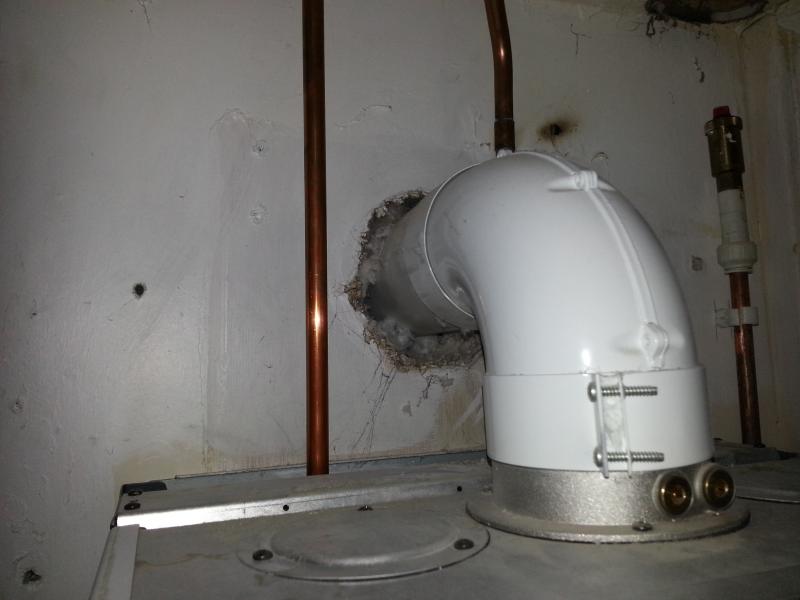We have a combi boiler (Potterton Performa 24) with quite a gap around the flue on one side. This lets air in from outside (and insulation when we had the Cavity wall done!) so ideally I would like to patch it up somehow.
Here is a picture of the problem:
Can anyone suggest a good way of covering this?
Here is a picture of the problem:
Can anyone suggest a good way of covering this?



